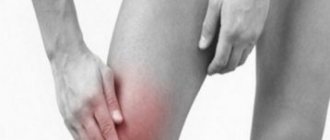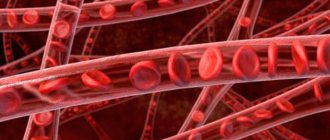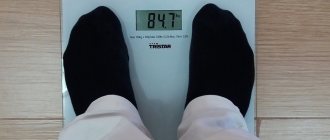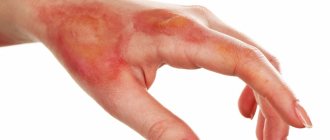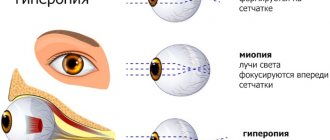The human diaphragm is a large, flat muscle that is located at the base of the lungs. During the process of inhalation and exhalation, it can contract and weaken. There is an opening in the diaphragm through which the esophagus passes, which subsequently connects to the stomach. Through its contractions, the diaphragm contributes to the work of the lower esophageal sphincter when a person bends the body, coughs, or performs other physical actions.
In some cases, the diaphragm muscles are weakened or there are congenital developmental anomalies. In this case, the stomach may partially slip in the area of the opening of the esophagus. In this case, it enters the chest area. This condition is commonly called hiatal hernia in medicine. Treatment of pathology is carried out by conservative and surgical methods.
With this disease, a person's likelihood of developing acid reflux increases. People over 50 years of age most often suffer from such problems. Moreover, women suffer from sliding hiatal hernia more often than men.
Reasons for education
Among the most common reasons that lead to the development of pathology, the following should be noted:
- overweight;
- pregnancy;
- excessive physical activity;
- pathology of development of the diaphragm of the esophageal opening of a congenital nature;
- persistent cough;
- increased intraperitoneal pressure;
- tendency to constipation;
- various injuries, diseases and surgical interventions;
- age-related changes.
All of these predisposing factors cause weakening of the tissues surrounding the diaphragm. This is the main reason for education.
Principles of treatment
In case of hiatal hernia, it will be extremely important to adhere to dietary nutrition, which should become part of not only treatment in the acute period, but also the prevention of complications and relapse throughout life. Additional measures will include therapeutic exercises, swimming, and taking medications.
The patient must undergo treatment with a gastroenterologist to prevent such a frequent companion of a hernia as reflux esophagitis.
The latter is manifested by the release of stomach contents into the esophagus, which leads to inflammatory processes and the addition of a complex of disorders. An additional symptomatic complex with esophagitis requires separate treatment.
To eliminate reflux without surgery, the following remedies are used:
- Antacid drugs
. Indicated to reduce the negative impact of acidic contents on the walls of the esophagus. - Enveloping
. Used to eliminate irritation of the mucous membrane of the stomach and esophagus. - Antispasmodic drugs.
Prescribed by a doctor when a sliding diaphragmatic hernia is accompanied by a peptic ulcer of the stomach and duodenum. - De-Nol.
Indicated for inflammatory and ulcerative diseases of the gastric mucosa and esophageal tube. - Motilium
. Prescribed to improve digestion processes. - Proton pump inhibitors
. They inhibit the synthesis of hydrochloric acid, thereby reducing its irritating effect on the walls of the esophagus and stomach.
Surgical treatment of a sliding hiatal hernia is prescribed by the attending physician in cases where organs are pinched in the diaphragm area.
Other complications of the pathological process include internal bleeding and stenosis, that is, narrowing of the esophageal tube. During the operation, the diaphragmatic ligament is strengthened, and a special tube can be additionally installed, which artificially expands the esophagus, eliminating stenosis. After the operation, a long period of rehabilitation begins. It includes following a diet, eliminating physical activity, and performing a set of therapeutic exercises.
This pathology of the esophagus can be either hereditary or acquired. A sliding hiatal hernia is also called a sliding hiatal hernia and is quite common; women are more susceptible to this disease than men. The disease is latent, so it is difficult to detect in the initial stage, but without treatment it can have serious consequences, for example, cause internal bleeding.
Sliding axial hiatal hernia is the most common type of disease; another type is sliding cardiac hernia. It is called so because the cardiac part of the stomach fits into the hole in the diaphragm.
The following types and degrees are distinguished:
In medical practice they are classified into three main types:
- sliding (axial), in which not only part of the stomach, but also its cardiac part is displaced into the chest cavity;
- paraesophageal, in which only part of the stomach is subject to displacement;
- mixed, in which there are signs of a sliding and paraesophageal type.
Axial hernias are also divided into degrees depending on the size of the prolapse:
- 1st degree, when the abdominal segment of the esophagus is above the diaphragm, the cardia is at the level of the diaphragm, and the stomach is below the diaphragm;
- 2nd degree, when the cardia is located above the diaphragm, and folds of the gastric mucosa are visible in the opening of the diaphragm;
- Stage 3, when part of the stomach protrudes into the chest cavity.
In patients suffering from hiatal hernia, a sliding (axial) type of grade 1 or 2 is most often found.
Symptoms
Characteristic symptoms of the disease are pain in the stomach and heartburn. With this hernia, the upper part of the stomach moves into the chest cavity through the enlarged opening of the diaphragm, and then returns to its normal position. But often the symptoms are mild, especially if the hernial protrusion is small. In many patients, a hernia is discovered by chance, after undergoing an x-ray.
An external examination also does not yield results - with the axial type of hernia, the abdominal organs are displaced into the internal cavity and there are no external symptoms. But with a prolonged course of the disease, the contents of the stomach are thrown into the esophagus, irritating its mucous membrane.
Diagnosis
Almost a third of patients are not even aware of their illness. This is due to its asymptomatic course. Externally, hernias do not manifest themselves in any way, and they can only be diagnosed by chance during an endoscopic or x-ray examination. Therefore, it is often not possible to start treatment in a timely manner.
The esophagus and its muscular structures can be examined using an esophagoscope. You can exclude the possibility of the presence of cancer or other neoplasms by taking a sample of esophageal tissue for examination. X-ray examination with a contrast agent is very effective, which allows you to detect protrusions formed in the lower part of the esophagus.
Axial sliding hiatal hernia: degrees of disease
Hernias are classified by degree and depend on the location and size of the pathology:
- the first degree is characterized by the location of the abdominal segment under the diaphragm, the hernia develops gradually;
- in the second degree, the cardiac part of the stomach is located above the diaphragm, and the gastric mucosa enters the esophagus;
- in the third stage of the disease, part of the stomach enters the thoracic region, the pathology is quite rare;
- the fourth is called giant; almost the entire stomach enters the sternum and puts pressure on other organs. This degree of hernia requires immediate hospitalization. Drug treatment will not help; surgical intervention is necessary.
At risk are mainly women and older people over 50 years of age, this is due to age-related changes in organs. The main reason for the development of pathology is a decrease in the tone of the muscles that regulate the expansion and contraction of the alimentary section of the diaphragm. With such disorders, the esophageal opening cannot completely close, which causes protrusion of part of the stomach and the formation of a hernia.
Clinical manifestations
Classic manifestations of hiatal axial hernia of degrees 1 and 2 include pain of varying degrees of intensity and variable nature: from burning to dull manifestations. Painful sensations may radiate to the heart area
, which is often perceived by patients as signs of heart failure. There are also cases when pain is observed in the interscapular area.
The following symptoms may also indicate this pathology:
- belching with air or stomach contents;
- heartburn after eating or exercising;
- difficulty swallowing food;
- pain in the chest cavity.
With a congenital pathology - a short esophagus - symptoms similar to those with an axial hernia or acquired shortening of the esophagus are observed. It is possible to conclude that the pathology is congenital only on the basis of anamnesis from childhood or during surgical intervention, as well as during a pathological examination.
Treatment methods
Once a diagnosis is made, treatment should begin immediately to reduce the risk of complications and the likelihood of future surgery.
Doctors treat a hernia without complications using conservative methods. Surgical treatment is indicated in late stages of axial hernia and bleeding.
Conservative treatment includes three measures:
- Diet.
You need to constantly monitor your diet. Patients are prescribed frequent meals with small portions of 250 g. Fatty, spicy, smoked, fried foods should be excluded (as well as anything that stimulates the production of gastric juice and irritation of the mucous membrane). The basis of nutrition: stewed, steamed, boiled dishes from cereals, vegetables, milk, dietary meat, fruits. If you have symptoms of dysphagia, food should be semi-liquid or ground, and you should not eat before bed. It is forbidden to rest lying down after a meal.
- Normalization of the rhythm of life.
Therapeutic measures
With this diagnosis, conservative and surgical treatment is possible. As for conservative treatment, its main task is not to eliminate the hernia itself, but to prevent such diseases as gastroesophageal reflux and reduce the symptoms of reflux esophagitis.
For these purposes, patients are recommended to follow a diet with frequent, divided meals.
. However, you should not consume foods such as chocolate, animal fats, coffee, carbonated drinks, flour products and fresh bread. Patients undergoing conservative treatment are advised not to take a horizontal position for 3 hours after eating.
The lifestyle should be as correct as possible; bad habits should be completely eliminated if possible, especially smoking. It is also very important to avoid any situations in which increased intraperitoneal pressure may occur.
Pharmacological drugs include antacids, proton pump inhibitors, prokinetics, etc., which correct gastric motility and secretory activity.
Surgical treatment for hiatal hernia is justified in case of unsatisfactory results of conservative treatment, as well as in cases where there is a risk of developing various complications
.
Hernias without symptoms of cardiac insufficiency
The symptoms in this case are due to esophageal dyskinesia and associated complications. After eating, with excitement, or bending, the patient experiences pain behind the sternum, in the epigastric region, and in the precordial region. Such pain can be quite long-lasting (several days), and can be relieved with nitroglycerin and non-narcotic analgesics. Validol does not bring relief. A patient with a hiatal hernia feels better when changing his body position to an upright position or drinking fluids.
In some cases, dysphagia occurs. When complications arise, the type of pain changes. The pain can be persistent, dull or aching, radiating to the interscapular space. Sometimes the body temperature rises to subfebrile levels.
Symptoms of a hiatal hernia when combined with other diseases of the gastrointestinal tract
In almost 45% of cases, diaphragmatic hernia is combined with the following diseases: cholecystitis, intestinal diverticulosis, pancreatitis, gastroduodenitis and peptic ulcer. Sometimes a duodenal ulcer is the cause of a hernia. In this case, the pain syndrome loses connection with food intake and occurs when changing body position. Symptoms of cardiac insufficiency may appear or intensify: belching, difficulty swallowing, heartburn, chest pain. A diaphragmatic hernia has a direct effect on the function of the pancreas, causing spasm of the muscular sphincter of the hepatopancreatic ampulla, which disrupts the outflow of secretions and damages the parenchyma of the organ.
Paraesophageal hernia
This type of hernia is extremely rare. The patient has no symptoms. Pathology is discovered accidentally as a result of examinations for another reason. Exceptions are hernias that have reached large sizes, which leads to the development of organic dysphagia, which is permanent and almost impossible to treat with antispasmodics.
If such a hernia is strangulated, pain develops (in the epigastric region and behind the sternum). The strength of the pain and the area of its irradiation directly depend on which part of the digestive tract is infringed.
Congenital hernia with short esophagus
This type of diaphragmatic hernia involves two developmental anomalies: the location of the cardiac part of the stomach or the entire stomach in the chest cavity. As a rule, there is no hernial sac in both cases. Symptoms are similar to those of hiatal hernias. But the diagnosis is usually made based on history or post-mortem after autopsy.
Treatment of hiatal hernia
The main method of radical treatment of diaphragmatic hernias remains surgical. In most cases, operations provide a lasting effect and a low relapse rate. Step-by-step photos of the operation are available on the Internet. The result of therapy and effectiveness in the diagnosis of hiatal hernia mainly depend on which symptomatic complex comes first in the clinical picture (dysphagia, reflux, heartburn, belching, pain). Because In most cases, the first and most striking sign of hiatal hernia is gastroesophageal reflux, and treatment is mainly aimed at eliminating it.
Operation options:
- suturing of the hernial orifice;
- strengthening the esophageal-phrenic ligament;
- options for gastropexy surgery;
- fundoplication option (aimed at eliminating reflux).
According to Allison's method, operations are performed to suture the legs of the diaphragm with excision of excess hernial sac and the formation of a new esophageal opening. After surgery, relapses are possible (up to 10%). This hiatal hernia treatment option has little effect on eliminating reflux. A sliding hernia is often operated on using the Hill technique. It is also not very effective for reflux.
The Nissen surgical technique plays a major role in the treatment of sliding hernias. In this case, the legs of the diaphragm are sutured, and a “muff” is formed around the esophagus from the anterior and posterior walls of the upper stomach. At the end of the operation, the anterior wall of the stomach is fixed to the anterior abdominal wall.
Patients diagnosed with a sliding hernia and concomitant reflux are recommended to be treated using the Belsey method. The essence is the immersion of the esophageal-gastric junction into the abdominal cavity and the formation of a valve apparatus in the cardiac part.
The main goal of surgical treatment is not so much the repair of the hernial orifice, but rather the elimination of reflux by forming the valve apparatus.
It is also possible to treat esophageal hernias conservatively. For some patients, inpatient treatment is appropriate. Patients with an uncomplicated course of the disease can be treated with traditional methods and at home.
Traditional methods of treating diaphragmatic hernias.
- A decoction of kupena in milk. Take 25 grams of dry matter, pour a glass of cold milk and boil for several minutes. Consume 20 ml chilled. twice a day.
- Potentilla cinquefoil is used as a treatment for hiatal hernia using traditional methods. To do this, take 25 grams of dry grass and pour 200 ml. boiling water Let it brew and drink 100 ml chilled. 2 times a day.
- Treating a hernia with the bark of aspen branches helps a lot. Pour boiling water over one tablespoon of young bark. Infuse and drink 20 ml. five times a day on an empty stomach.
- Stone stone is also effective in treating hiatal hernia. Both grass and plant berries are used. Dry leaves (a tablespoon) are poured into 200 ml. boiling water. Infuse and drink throughout the day in small portions.
- Meadowsweet is successfully used in the treatment of diaphragmatic hernia at home using folk remedies. To do this, a tablespoon of dry herb is infused in boiling water for 2 hours. Drink in small portions.
We recommend that you coordinate treatment with traditional methods with your doctor.
What complications are observed?
Among the most dangerous complications that this disease can provoke are the following:
- esophageal bleeding;
- peptic ulcers;
- reflux esophagitis;
- peptic esophageal stricture;
- prolapse of the gastric mucosa into the esophagus;
- strangulated hernia;
- perforation of the esophagus.
After surgical treatment, it is possible to develop megaesophagus, gastric dilation, gastroesophageal reflux, as well as recurrent hernia. There are also cases of complications of aspiration pneumonia, which is treated with parenteral antibiotics.
How does hiatal hernia manifest itself?
The main clinical manifestations of a sliding diaphragmatic hernia:
- Dyspeptic phenomena.
This is heartburn, hiccups, belching. Symptoms increase especially after eating, and when the patient assumes a horizontal position after filling the stomach. Such manifestations can occur for no apparent reason, for example, at night and in the morning. - Dysphagia or difficulty swallowing.
Such a phenomenon with a hiatal hernia will be more psychological, because while swallowing food, the patient may feel discomfort and pain associated with inflammation of the esophagus, which creates a fear of repetition of the unpleasant sensations. As a result, food intake begins to be accompanied by a lack of swallowing reflex. The patient switches to eating exclusively liquid and semi-liquid foods. This, in turn, leads to weight loss. In this regard, the patient is prescribed a therapeutic diet. - Frequent pathologies of the respiratory system
. Bronchitis and aspiration pneumonia appear as a result of particles of poorly chewed food entering the respiratory tract. This threatens purulent pneumonia and chronic respiratory diseases, which only aggravate the patient’s already serious condition. - Regulation
. This phenomenon is associated with the backflow of stomach contents into the oral cavity. Long-term exposure to stomach acid leads to dental diseases. A patient with an esophageal hernia is faced with increased sensitivity of the enamel, papillitis, various stomatitis and gingivitis. Treatment of a local problem in the oral cavity does not lead to positive results, and until the main problem is eliminated, dental pathologies will only progress, and constant irritation of the mucous membrane can result in precancerous conditions and even oncology.
Diagnosis of a hiatal hernia is carried out by endoscopic examination.
Additionally, the patient is prescribed laboratory tests to identify or exclude the inflammatory process. Esophagogastroduodenoscopy, that is, examination of the condition of the gastric mucosa, is also indicated. Inserting a probe will not be the most pleasant procedure for the patient, but only in this way can many associated problems be detected that need to be dealt with in parallel.
Diagnosis of sliding hernia
Diagnosis of a sliding hiatal hernia is carried out not only on the basis of symptoms, and treatment is prescribed by the attending physician after a full examination. For this, a number of diagnostic measures are prescribed:
- X-ray examination;
- Ultrasound;
- FGDS;
- sometimes an MRI is prescribed;
- gastroscopy;
- acidity measurement;
- endoscopy.
After a complete diagnosis has been made, the doctor prescribes treatment. It must be started immediately to avoid surgery. If the hernia is discovered late and internal bleeding begins, treatment is carried out only surgically.
Physiotherapy
With a sliding hiatal hernia, moderate, quiet physical activity is very useful. They should be aimed at relaxation, general strengthening of the body and abdominal walls, and, if necessary, weight loss. Through exercise therapy, the patient achieves a decrease in pressure in the abdominal cavity, which provokes protrusion of the esophagus.
It is worth starting with walking in the fresh air or using a treadmill. You should walk on the simulator at the same pace as outside, without increasing the load. The minimum duration of a walk is at least half an hour, in the future you need to increase this time. Walking is an easy way to improve muscle tone while avoiding strain and relieve stress.
Abdominal exercises and bending exercises should be performed in small quantities. Several approaches of 10–15 times will be enough; you need to take into account your well-being and physical fitness.
Jumping is required, not too intense, with intervals for rest and respite. You can jump on the spot, doing several approaches at a time. Jumping helps the stomach lower into place in the abdominal cavity, which eliminates the prolapse of the hernia. To enhance the effect, some patients drink a glass of water before exercise, increasing the weight of the stomach and speeding up its movement. In addition to jumping on the spot, jumping from the bottom step or low hill is possible (for example, a sports step). This gives an additional jolt to the stomach.
It is worth paying attention to yoga and Pilates. These are calm, almost static exercises that work all muscle groups without creating pressure. Pilates is one of the best ways to pump up your abs at a very moderate pace. Don’t forget to consult your doctor first, as not all asanas will be equally beneficial for a hernia. Also inform the instructor about your medical condition.
Maintain moderation in exercise, increase the load only gradually when approved by the doctor. Exercise and physical activity should be part of your life forever, not just during therapy. This will help avoid relapses of the disease.
The diet prescribed by the doctor should be followed precisely and constantly:
- split meals approximately 4 - 6 times a day in small portions, this will prevent the stomach from stretching and normalize digestion (a single portion should fit on a saucer);
- give up unhealthy foods that greatly irritate the mucous membrane of the stomach and esophagus (fatty, fried, salty, pickled, fast food, processed foods, sweets, sweet carbonated drinks with dyes);
- the basis of the diet should be lean meat, cereals, vegetables, fruits, dairy products;
- food can be boiled, baked, stewed, steamed;
- drink clean water throughout the day, but not immediately after meals;
- You can eat your last meal 1 – 2 hours before bedtime.
Your doctor will provide an exact list of permitted products based on your diagnosis. During treatment, some adjustments to the diet are possible, but in general the diet will always have to be followed.
Do not forget that for the normal functioning of the body it is necessary to consume fats. High-quality vegetable oil in small quantities is quite acceptable. Oil should be used to season the salad, but do not use it for frying.
Like any other hernia, a sliding hernia is a serious disease that should not be trifled with. Despite the simple principles of therapy, they must be strictly followed, self-medication must not be allowed and you must be very careful about your health. This approach will help get rid of the disease and prevent complications.
To all the recommendations listed above, it is worth adding lifestyle adjustments. It is worth giving up bad habits, quit smoking, and do not drink alcohol. You should get proper rest and avoid heavy loads and stress.
Brattseva Ekaterina Valerievna Doctor of the highest category. Assistant professor. Candidate of Medical Sciences. Experience in medical practice: 13 years.
Author of the article: Victoria Stoyanova, doctor of the 2nd category, head of the laboratory at the diagnostic and treatment center (2015–2016).
Among all diaphragmatic hernias in adults, the most common is a sliding esophageal hernia, which is classified as a hiatal hernia (HH). A sliding hiatal hernia (also called axial hiatal hernia) is formed when the stomach and lower esophagus are displaced into the chest cavity (and normally they are located in the abdominal cavity).
The disease does not have any critical impact on the patient’s quality of life. It lasts a long time, gradually progressing, often completely asymptomatic. The disease responds very well to conservative therapy (without surgery). The main thing is to recognize the signs of a hernia in time and begin treatment.
Diagnostics
Diagnosis is carried out by qualified specialists based on the clinical picture together with the results of the following tests:
- X-ray examination based on barium contrast - as a result of this test, a picture of a certain protrusion of the hernia is obtained;
- fibrogastroscopy - through this test, the condition in which the stomach and esophagus are generally located is determined;
- pH-metry is carried out as a method for determining the acidity of the stomach, which is necessary for prescribing the correct therapy.
Treatment of hiatal hernia
Treatment of a hiatal hernia can be carried out using two methods: conservative and surgical. The goal of the conservative method is to normalize the patient's condition and prevent possible complications. In many cases, long-term remission can be achieved. The basis of the non-surgical method is the use of medications in the following areas:
- to reduce the acidity of gastric juice;
- to reduce gastric secretion;
- to protect the mucous membrane of the esophagus from the influence of aggressive enzymes of gastric juice.
Patients are recommended to follow a special diet with split meals and reduced portion sizes. Avoid foods that cause flatulence or constipation from the diet. For large food hernias, surgery is the only treatment option. Indications for surgical intervention are:
- lack of positive dynamics as a result of conservative therapy;
- noticeable deterioration in the patient's condition;
- the appearance of complications: inflammation, erosion or ulcer of the esophagus, bleeding and anemia;
- the presence of large hernias;
- abnormal development of the esophageal mucosa (dysplasia);
- fixation of a hiatal hernia in the area of the hernial orifice;
- sliding-type paraesophageal hernias, the presence of which significantly increases the likelihood of strangulation.
Are young men with hiatal hernia accepted into the army?
According to Article 60 of the “Schedule of Diseases”, a conscript with stage 1 hiatus hernia is prescribed service in category B-3. The service must take place subject to the necessary conditions and medical recommendations.
With a confirmed diagnosis of “2nd degree hiatal hernia”, the young man is not accepted into the army, establishing category B, which limits the possibility of service.
In Article 60 there is a note that if a patient is sent for surgical treatment, then they are given a deferment from service for the duration of the operation and post-operative rehabilitation. If the operation is successful, the conscript is declared fit for service and taken into the army.
Etiology
Hiatal hernia occurs from a variety of causes. Often the following reasons are identified as factors provoking their occurrence:
- Age-related changes that are caused by certain degenerative disorders, as a result of which connective tissue ligaments are affected;
- Simultaneous chronic or systematic chronic increase in pressure in the peritoneum.
Reasons that contribute to increased blood pressure: Blunt injuries to the abdomen; Difficult childbirth; Prolonged constipation; Intense physical exercise, during which weights are lifted while bending, etc.; The presence of chronic diseases directly affecting the digestive system, in which the motility of the stomach, gallbladder, and duodenum is impaired; A certain type of endocrinopathy; The presence of bad habits, as well as old age - these reasons are also identified as reasons predisposing to the onset of the disease.


